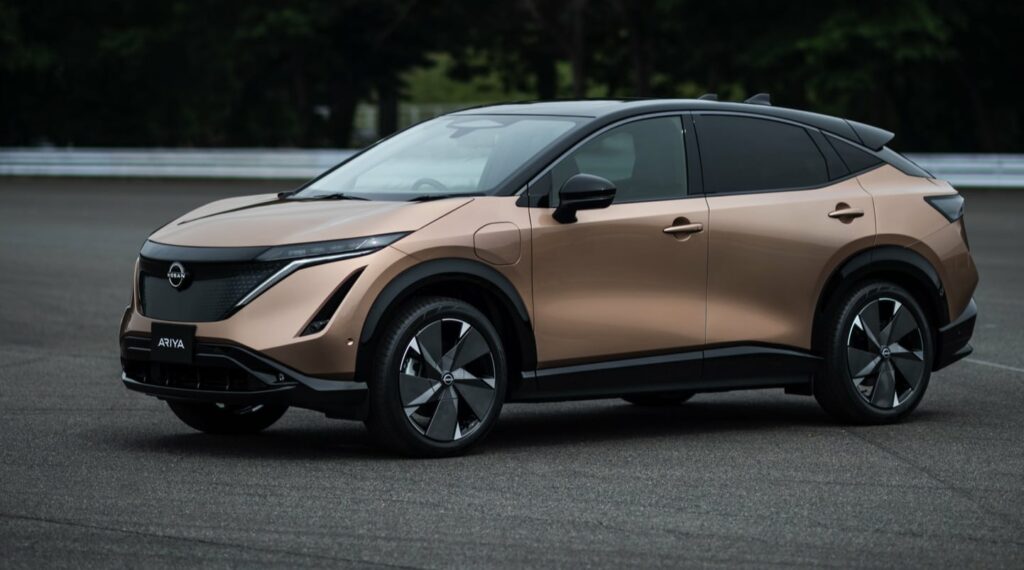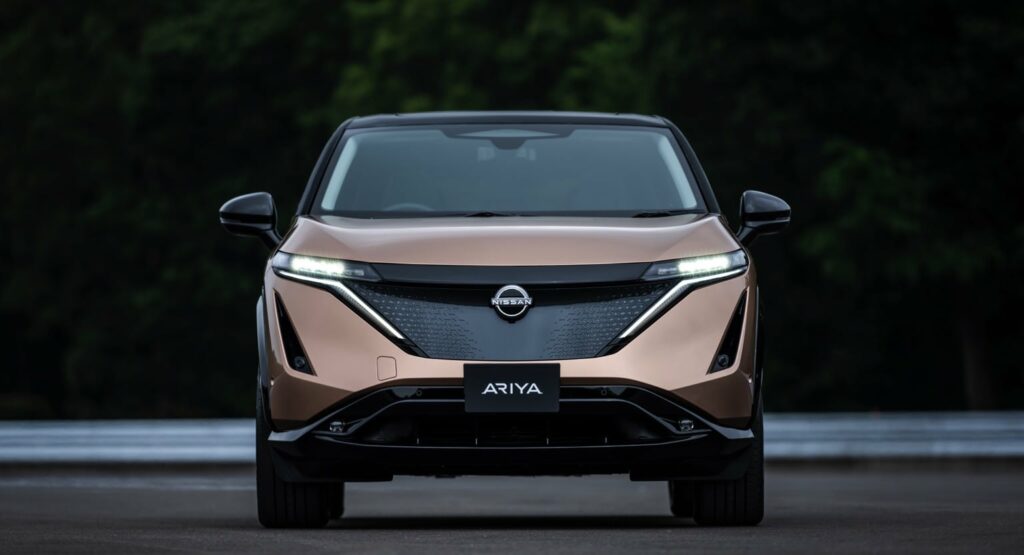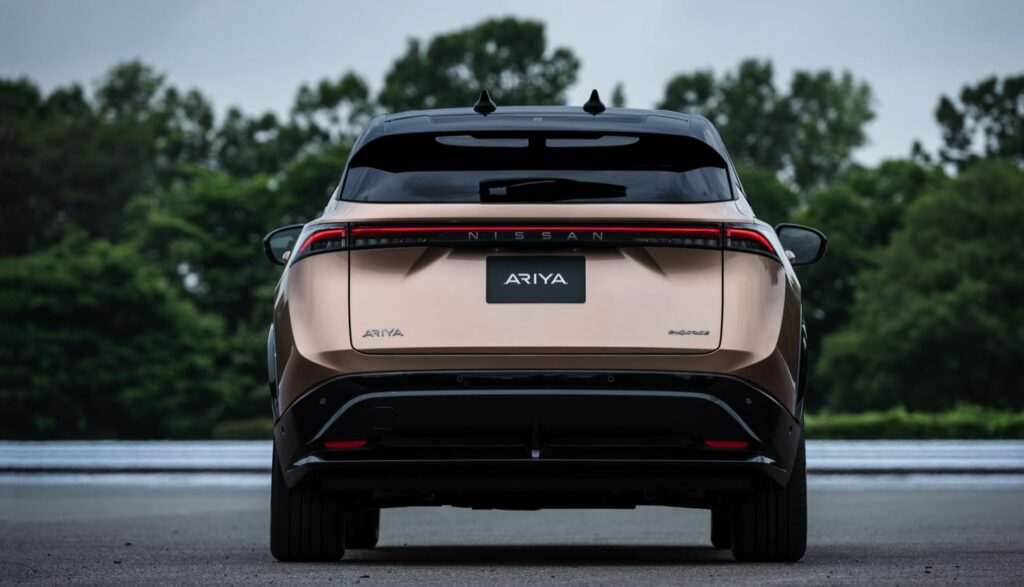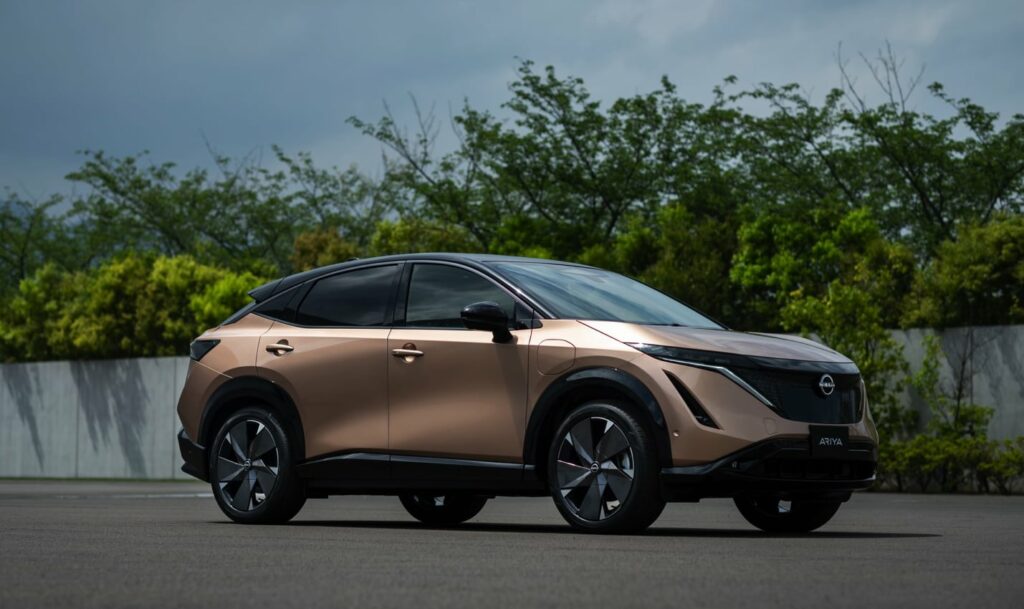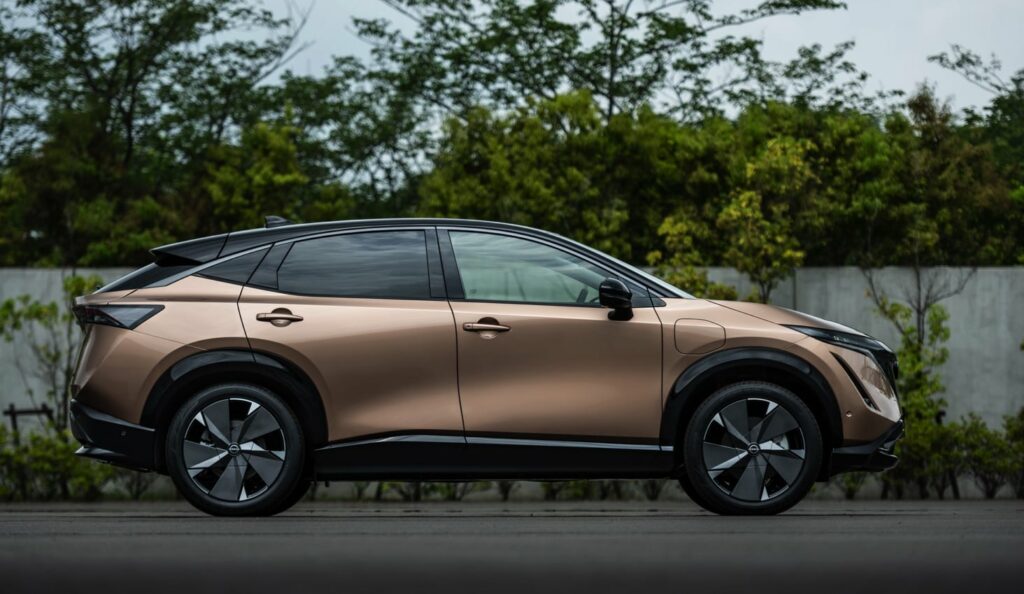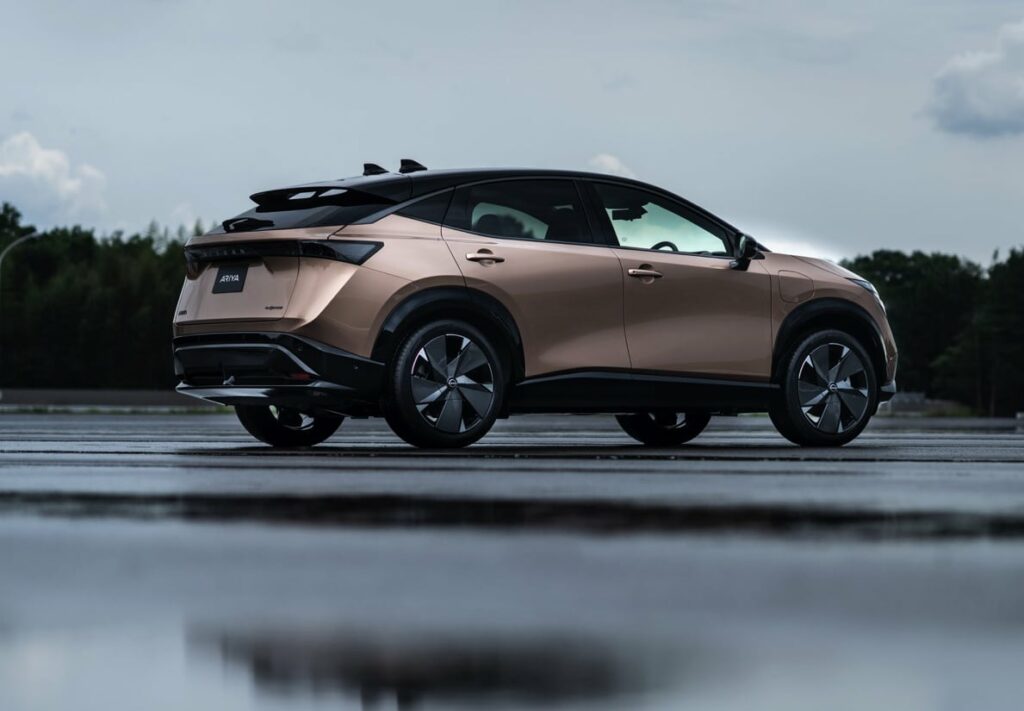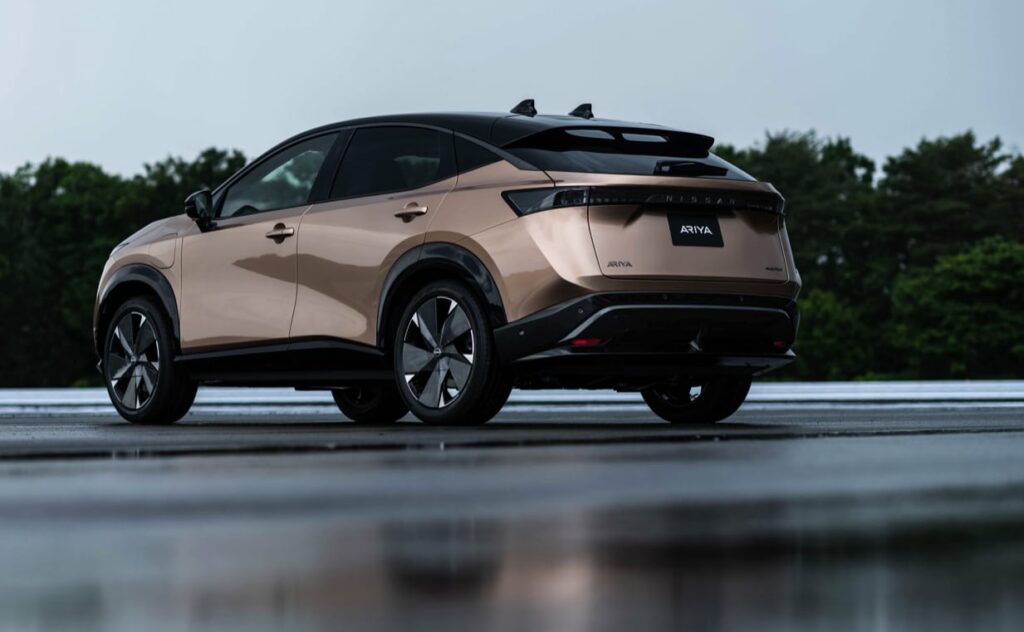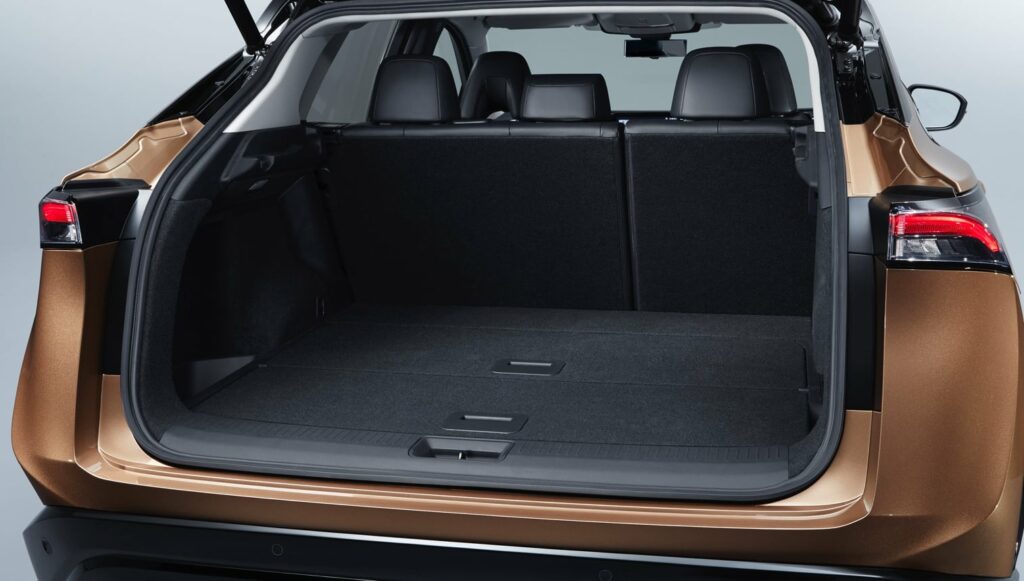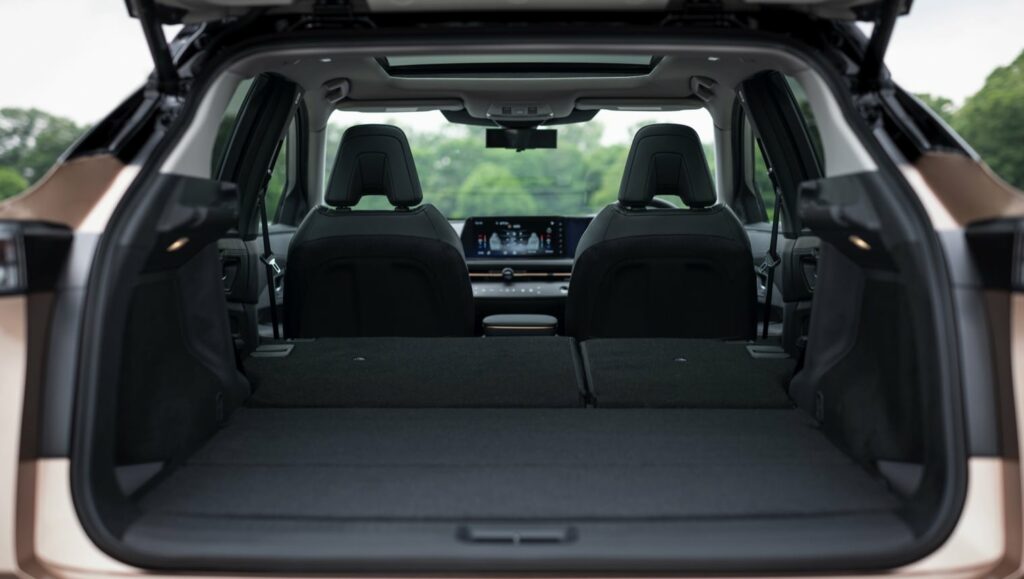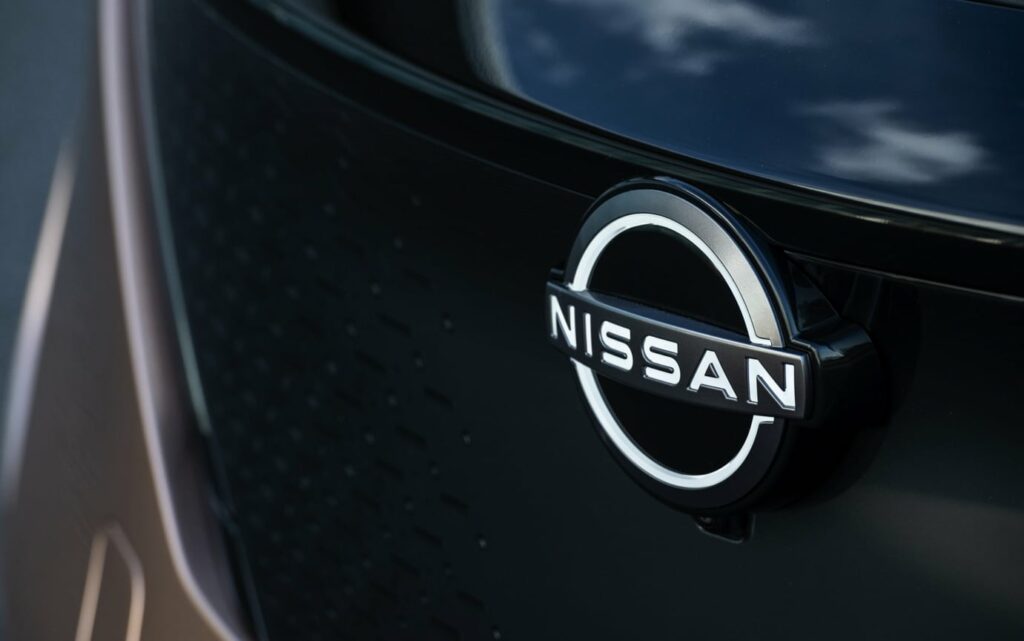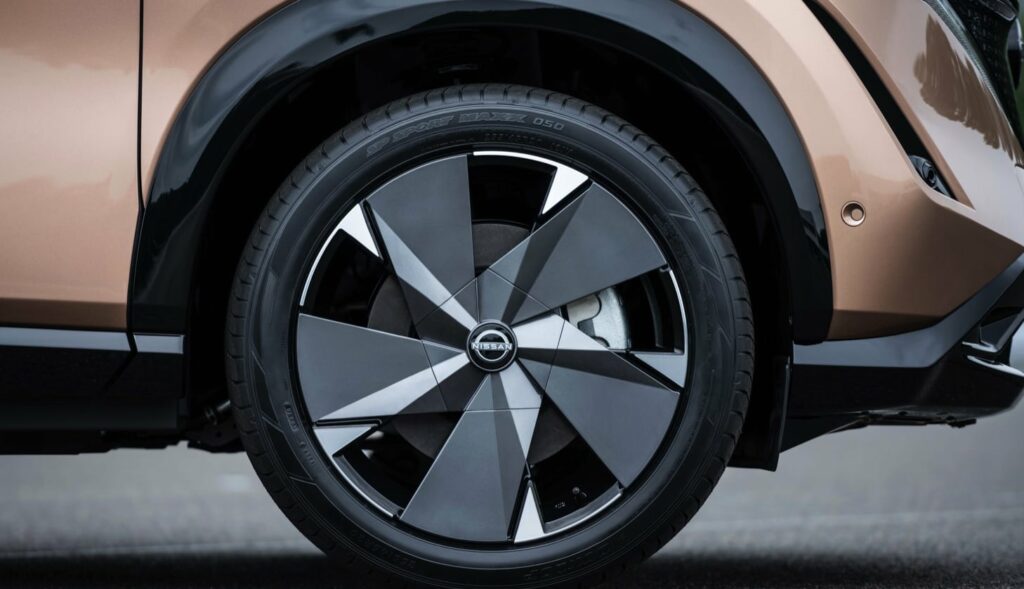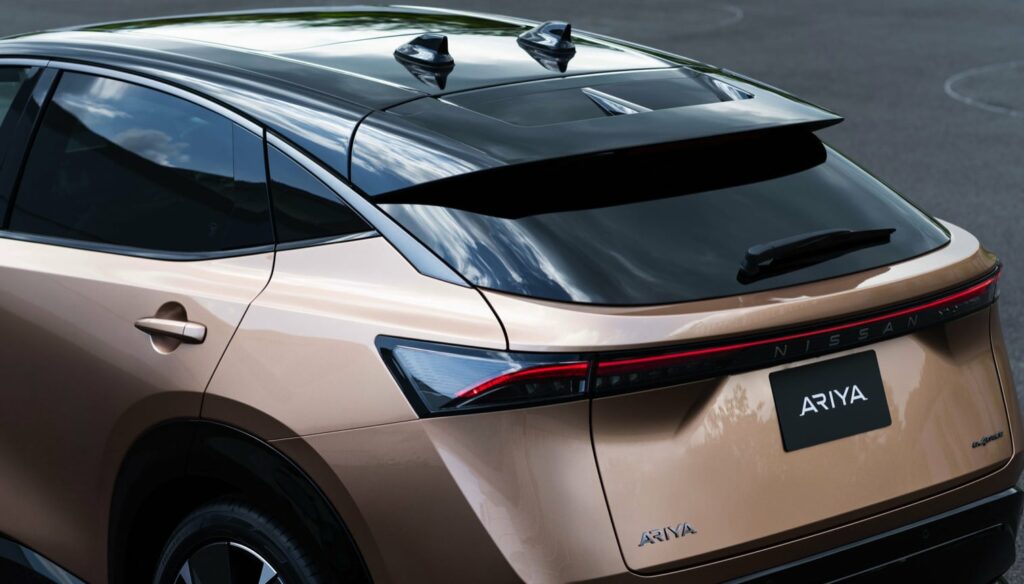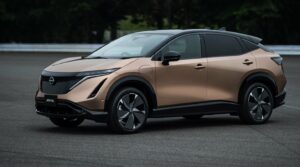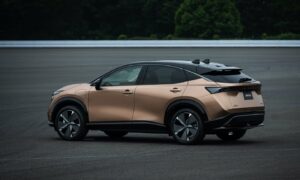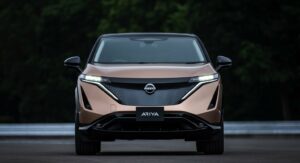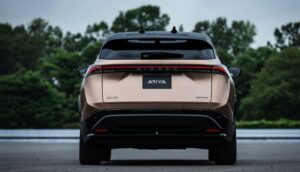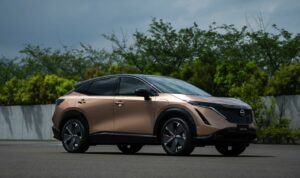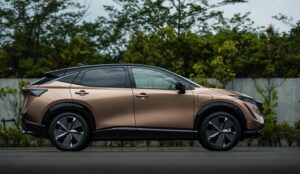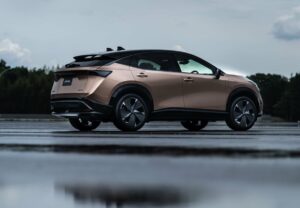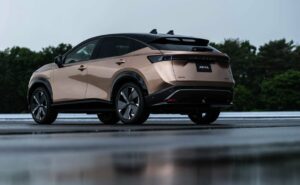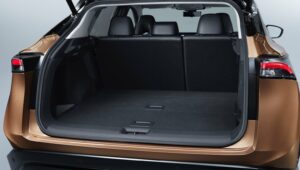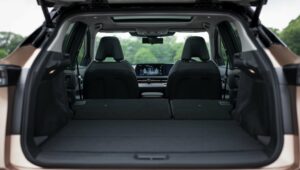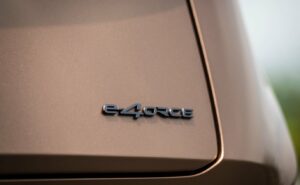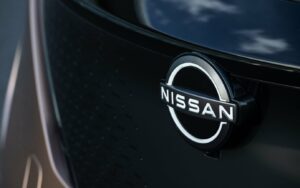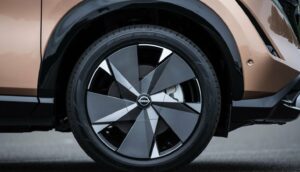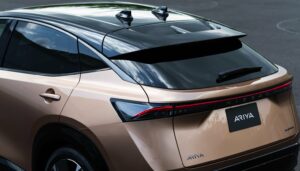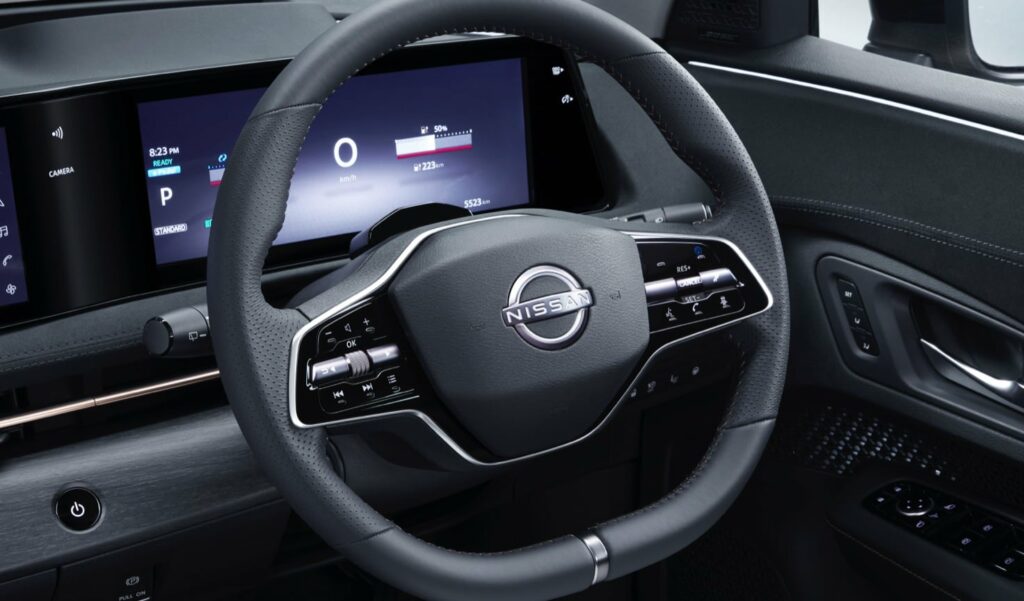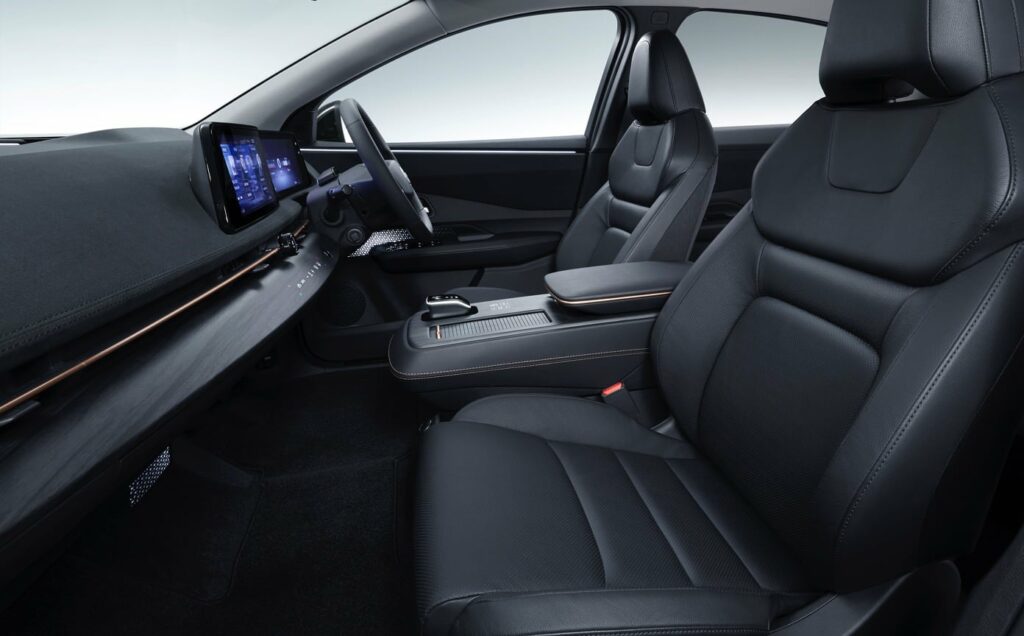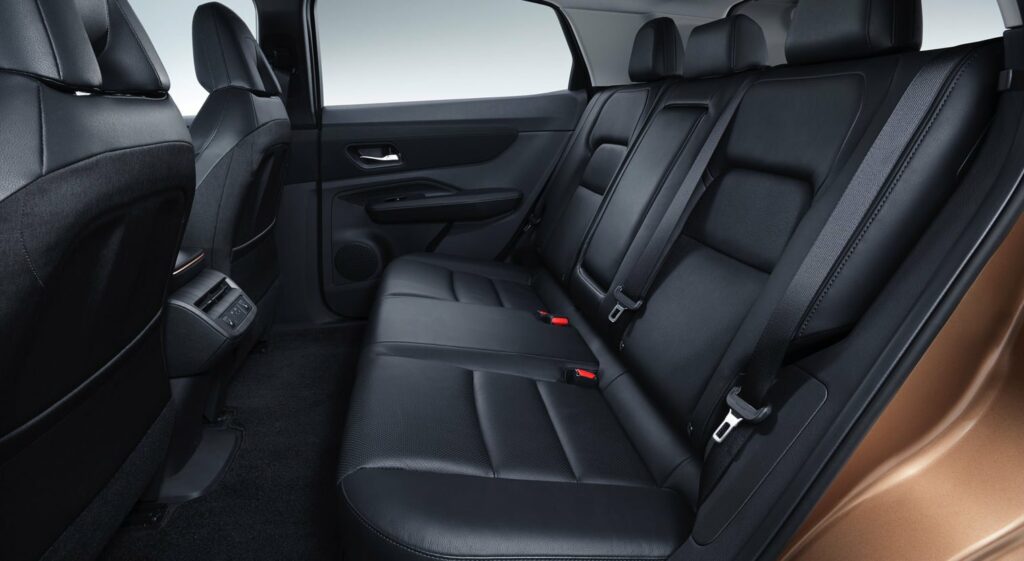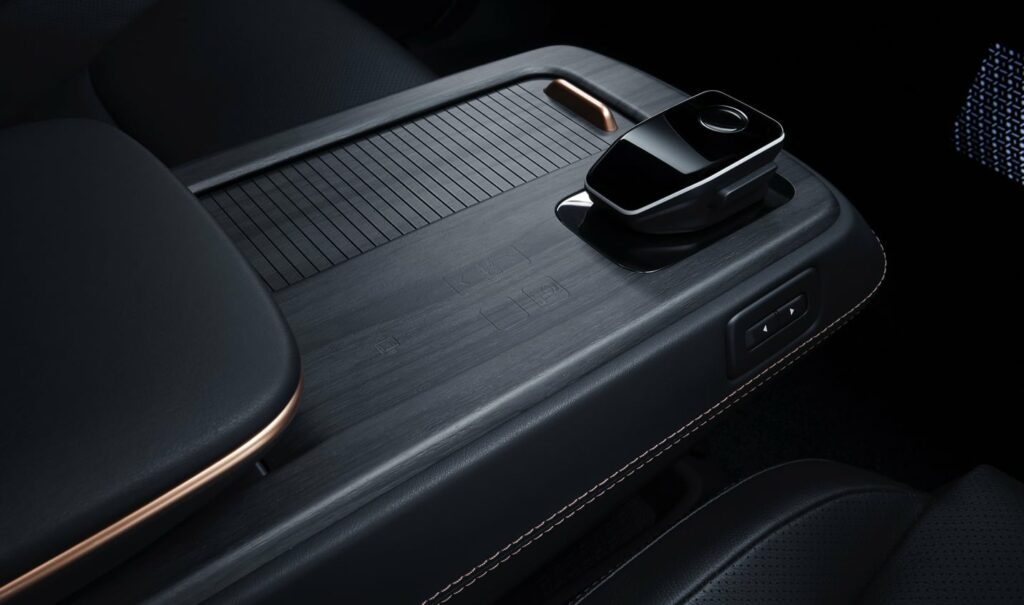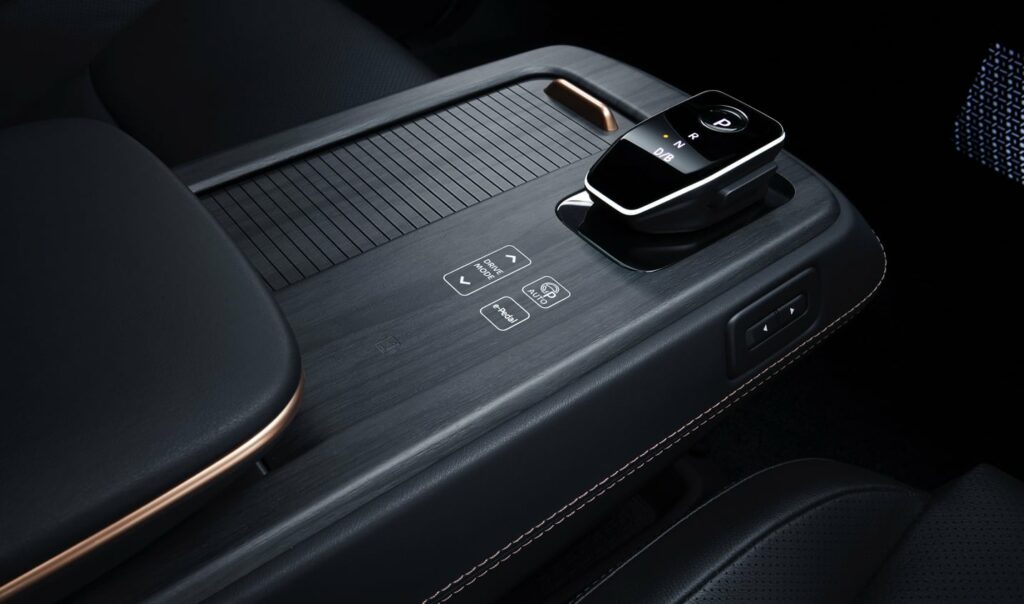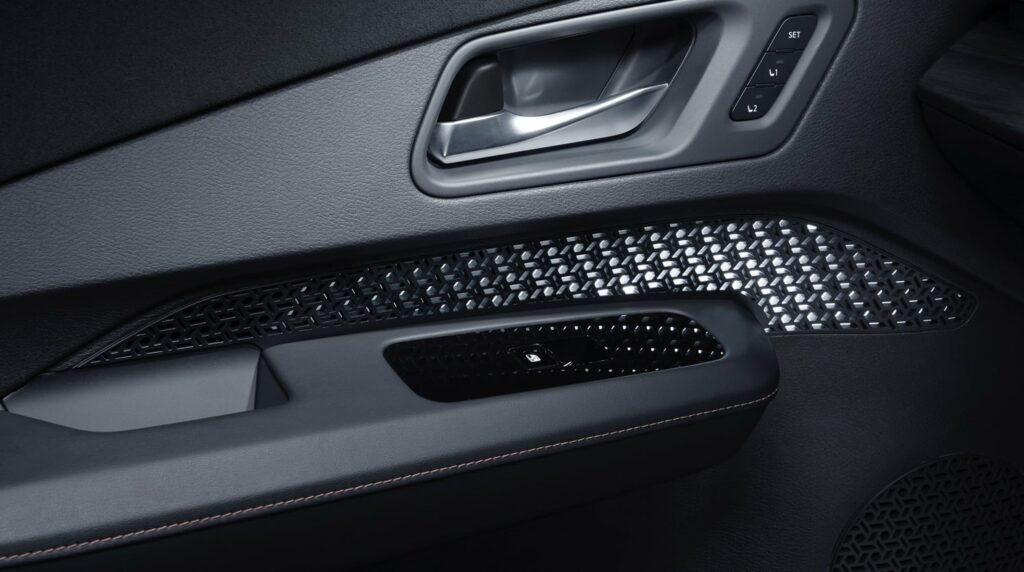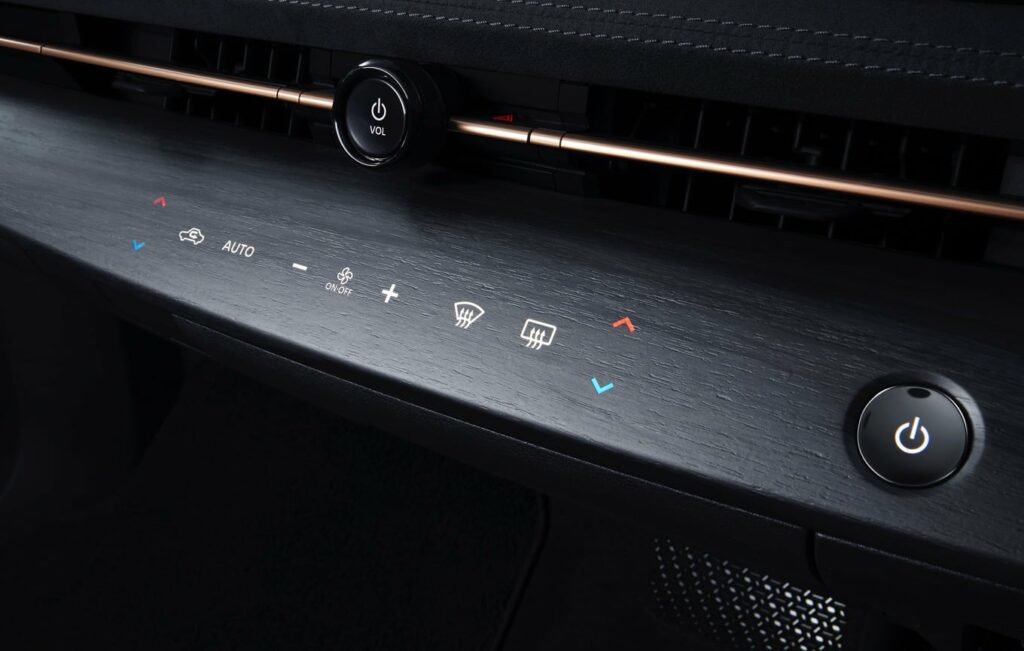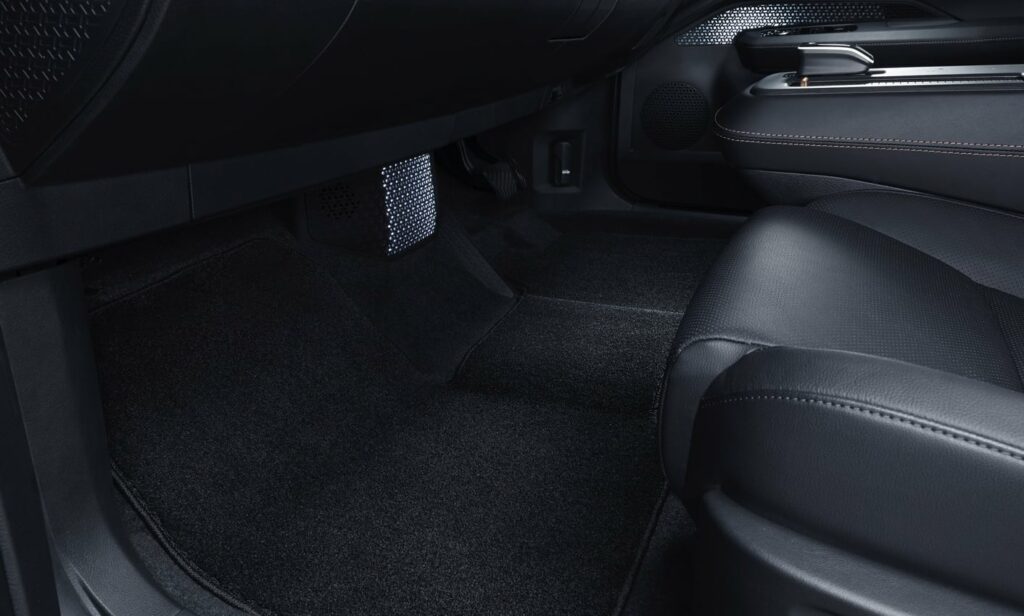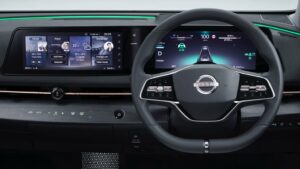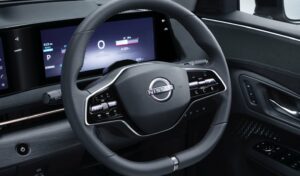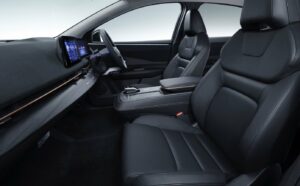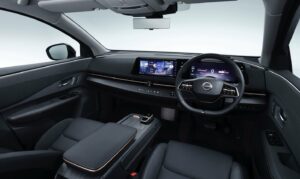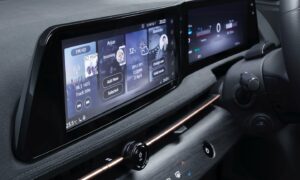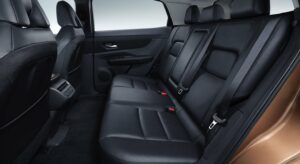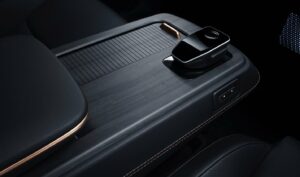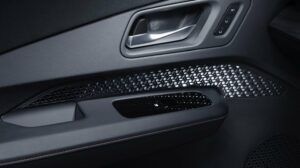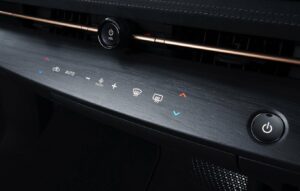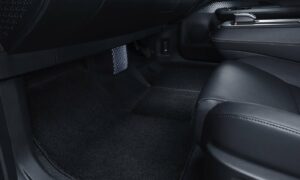Nissan Ariya e-4ORCE 63kWh
The Nissan Ariya e-4ORCE 63kWh is a variant of the Nissan Ariya electric SUV that features a dual-engine all-wheel drive system for improved traction and handling. It is expected to be available for purchase in some markets in 2021.
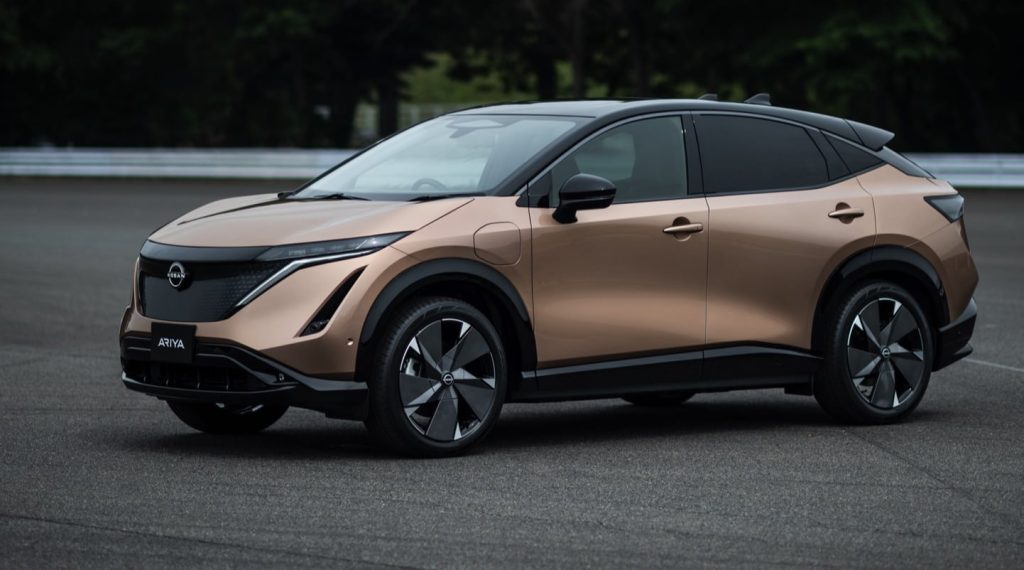
The Ariya e-4ORCE 63kWh has a 63kWh battery pack that provides up to 325 km of range on a single charge. It features two electric motors, one on each axle, which together delivers 205 kW, and 560 Nm of torque for a smooth and powerful drive.
The e-4ORCE system in the Ariya e-4ORCE 63kWh provides superior handling and stability on a variety of road surfaces and driving conditions. It uses advanced technologies such as regenerative braking and torque vectoring to provide optimal control and traction.
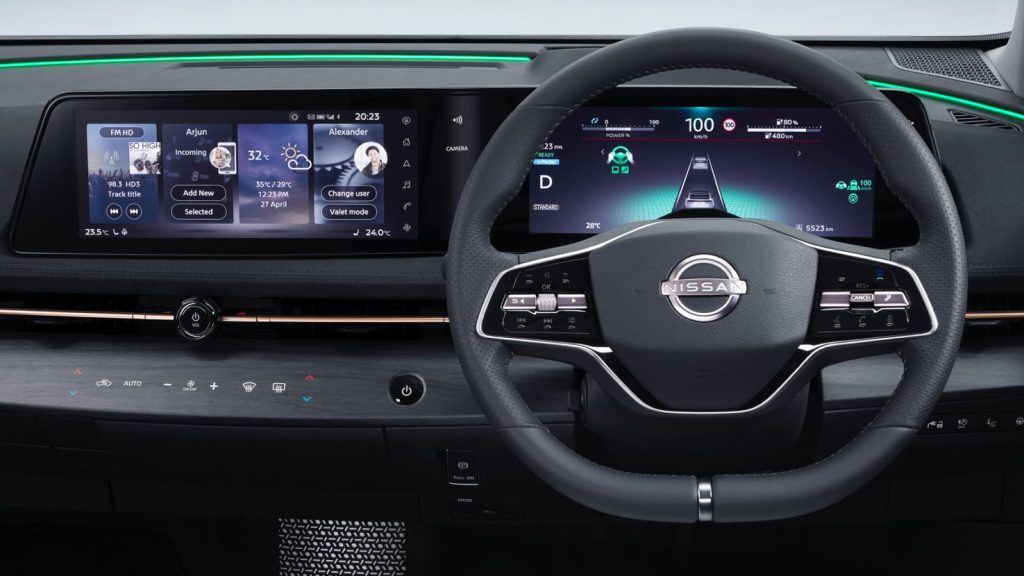
Like other Ariya variants, the e-4ORCE 63kWh features a sleek and modern exterior design, and a spacious and comfortable interior with advanced features such as ProPILOT Assist 2.0, e-Pedal, adaptive cruise control, lane departure warning, and blind spot monitoring.
Overall, the Nissan Ariya e-4ORCE 63kWh is an upscale electric SUV with advanced features and a powerful and capable all-wheel drive system. It epitomizes Nissan’s commitment to the future of electric mobility and is sure to be a popular choice among those looking for a high-performance electric vehicle.
| Performance | |
| Acceleration 0 – 100 km/h | 5.9 sec |
| Top Speed | 200 km/h |
| Electric Range | 325 km |
| Total Power | 205 kW (279 PS) |
| Total Torque | 560 Nm |
| Drive | AWD |
| Battery and Charging | |
| Battery Capacity | 65.0 kWh |
| Battery Useable | 63.0 kWh |
| Europe | |
| Charge Port | Type 2 |
| Charge Power | 7.4 kW AC |
| Charge Time (0->325 km) | 10 hours |
| Charge Speed | 32 km/h |
| Fastcharge Port | CCS |
| Fastcharge Power (max) | 130 kW DC |
| Fastcharge Time (33->260 km) | 31 min |
| Fastcharge Speed | 440 km/h |
| Energy Consumption | |
| EVDB Real Range | |
| Range * | 325 km |
| Vehicle Consumption * | 194 Wh/km |
| CO2 Emissions | 0 g/km |
| Vehicle Fuel Equivalent | 2.2 l/100km |
| WLTP Ratings | |
| Range | 340 km |
| Rated Consumption | No Data |
| Vehicle Consumption | 185 Wh/km |
| CO2 Emissions | 0 g/km |
| Rated Fuel Equivalent | No Data |
| Vehicle Fuel Equivalent | 2.1 l/100km |
|
Rated = official figures as published by manufacturer. Rated consumption and fuel equivalency figures include charging losses.
|
|
|
Vehicle = calculated battery energy consumption used by the vehicle for propulsion and on-board systems.
|
|
| Real Energy Consumption Estimation between 130 – 274 Wh/km | |
| City – Cold Weather * | 191 Wh/km |
| Highway – Cold Weather * | 274 Wh/km |
| Combined – Cold Weather * | 225 Wh/km |
| City – Mild Weather * | 130 Wh/km |
| Highway – Mild Weather * | 214 Wh/km |
| Combined – Mild Weather * | 170 Wh/km |
| Energy use for each trip will vary considerably depending on the driver and the conditions. Therefore, we have provided a range of estimates which can be useful in developing an understanding of the potential benefits of this technology. | |
| Dimensions and Weight | |
| Length | 4595 mm |
| Width | 1850 mm |
| Width with mirrors | No Data |
| Height | 1660 mm |
| Wheelbase | 2775 mm |
| Weight Unladen (EU) | 1900 kg |
| Gross Vehicle Weight (GVWR) | No Data |
| Max. Payload | No Data |
| Cargo Volume | 415 L |
| Cargo Volume Max | No Data |
| Cargo Volume Frunk | No Data |
| Roof Load | No Data |
| Tow Hitch Possible | Yes |
| Towing Weight Unbraked | No Data |
| Towing Weight Braked | 1500 kg |
| Vertical Load Max | No Data |
| Miscellaneous | |
| Seats | 5 people |
| Isofix | No Data |
| Turning Circle | No Data |
| Platform | RNM CMF-EV |
| Car Body | SUV |
| Segment | JC – Medium |
| Roof Rails | No Data |
| EV Dedicated Platform | Yes |
Home and Destination Charging (0 -> 100%)
A public charging station is required to use the highest possible charging rate. The EVSE/charging station’s charging capacity affects how long it takes to fully charge the battery. The table below shows all possible options for fully charging the Nissan Ariya e-4ORCE 63kWh.
In Europe, plugging an electric car into an outlet is often as easy as plugging it into a household outlet, but there are differences from country to country. The table below shows the different ways to charge the Nissan Ariya e-4ORCE 63kWh0, but in some countries some chargers may not be available.
Type 2 ( IEC 62196)

| Charging Point | Max. Power | Power | Time | Rate |
| Wall Plug (2.3 kW) | 230V / 1x10A | 2.3 kW | 32h15m | 10 km/h |
| 1-phase 16A (3.7 kW) | 230V / 1x16A | 3.7 kW | 20h15m | 16 km/h |
| 1-phase 32A (7.4 kW) | 230V / 1x32A | 7.4 kW | 10 hours | 33 km/h |
| 3-phase 16A (11 kW) | 230V / 1x16A | 3.7 kW | 20h15m | 16 km/h |
| 3-phase 32A (22 kW) | 230V / 1x32A | 7.4 kW | 10 hours | 33 km/h |
Fast Charging (10 -> 80%)
If you want to enjoy driving an electric car, one of the most important features to consider is the number of miles per hour the car can travel while charged. This is called the “range” of the car. All electric cars have a certain range, even if they are 100% charged. This is because they do not have an internal combustion engine to lean on if you need to drive a long distance.
Max. Power: The maximum power provided by the charging point
Avg. Power: The average power provided by the charging point during a session of 10% to 80%.
Time: the time it takes to charge from 10% to 80%
Speed: the average charging rate during the session of 10% to 80%
Combined Charging System (CCS Combo 2)
| Charging Point | Max. Power | Avg. Power | Time | Rate |
| CCS (50 kW DC) | 50 kW | 40 kW | 70 min | 190 km/h |
| CCS (100 kW DC) | 100 kW | 75 kW | 37 min | 360 km/h |
| CCS (150 kW DC) | 130 kW | 90 kW | 31 min | 440 km/h |
| Brand | Nissan |
| Model | Ariya e-4ORCE 63kWh |
| Body Style | SUV |
| Car Engine | electric |
| Motor power | 205 |
| Maximum Torque, Nm | 560 |
| Battery Energy, kWh | 65.0 |
| Power reserve (NEDC/EPA/WLTP), km | - / - / 325 |
| Level Charging (230/400/DC), hours | - / - / 0.31 |
| Electrical Acceleration, 0-100 km/h (0-62.1 mph) in sec | 5.9 |
| Top Speed, km/h | 200 |
